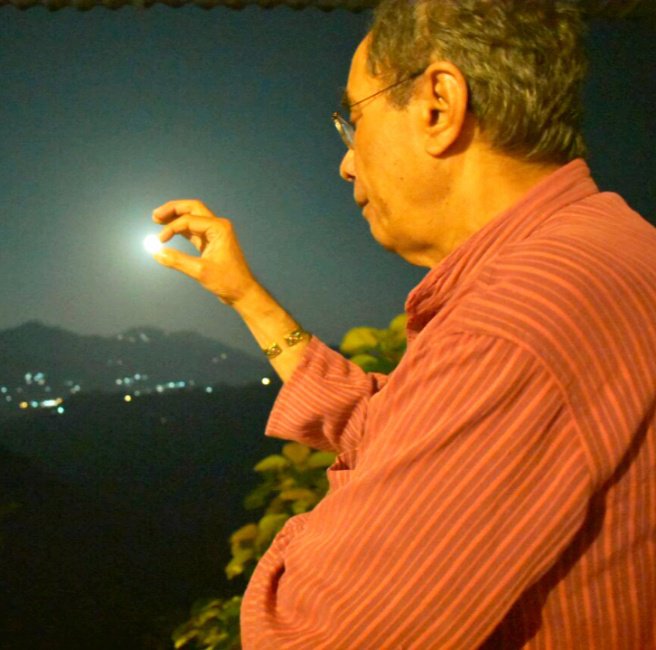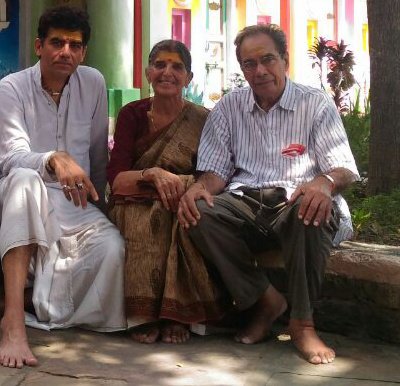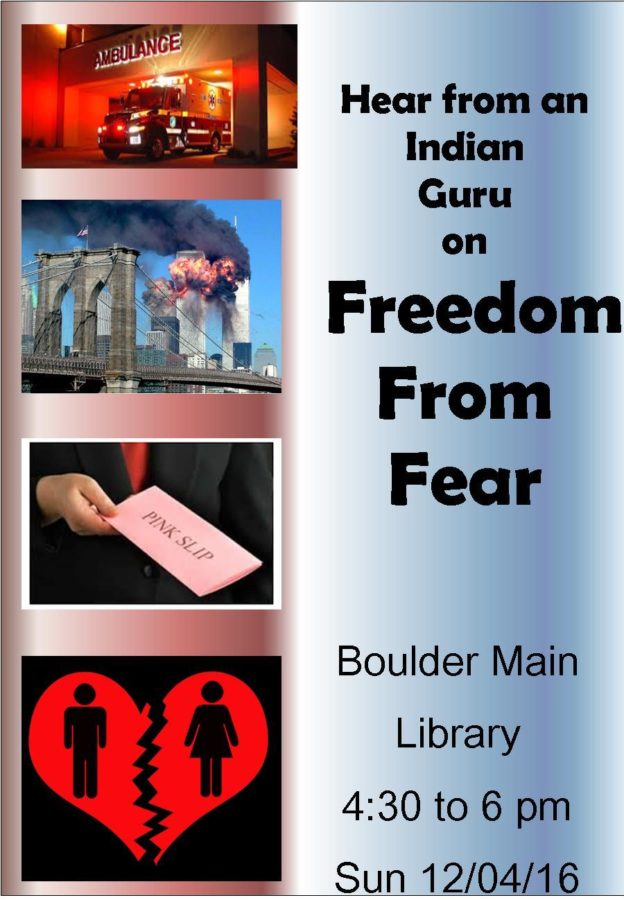I have been asked this question many times and recently in FB group, Satsang Shukl’acharya , I was asked -“how do you know you have reached or found your guru ?? Do you meet many gurus on your life’s path at different stages each teaching you something or taking you a step forward or guru is only one ? How do you recognise him or her”
The question is how do you know you’ve reached or found your guru . This is followed by another question, do you meet many guru’s on your life’s path at different stages or is there a single guru and how do you recognize him or her.
Before I answer this, and I can answer this right away, but then this needs explanation to the question, how do you know if you have reached or found your guru?
The answer is – the one, who is able to answer your queries show you the path and guide you. So, are there many gurus on the path? No, there is only one guru. There can be many people guiding you to the guru, or being teachers of various life skills, but there is only one spiritual Guru in your life.
How do you recognize him or her? You recognize the guru by not only the ability of him/her to draw you towards him, he or she will also be the one who has the ability to inspire you to surrender to him or her.
However this above requires a larger explanation, the one just given is too simple an explanation. Without understanding the background it would make no sense, or limited or misleading sense. The first thing is to know is, who is a guru? A guru is one to whom you are drawn. For each person his guru is the one to whom he is drawn. If one’s mind space is dominantly occupied by a guru, that person is your guru. So now you can understand in the following analogy – For a child a five-year-old child you give him money and tell him to go to the market what would he do? He is drawn to chocolates, he will go to a chocolate shop and buy chocolates or cake and be happy spending the money there. So the chocolate seller is the guru or draw for him. A 10-year-old boy has money and you send him to the market, he will be drawn possibility to comics or some toys maybe and he will spend money on that. His drawing is to the comics or toys. Now coming to an older boy, a 15-year-old boy who has money and gone to the market, he’ll possibly be buying clothes, burgers or possibly something for a friend, girl or boy as the case may be, and that would be the draw for him. Does it mean that the chocolate of the comics or the clothes are the guru or that the one who is providing them is the guru? No, just because you are drawn to something does not mean that is the guru. What it means is that, that is the level you are in at a time and that you are drawn to something at that time.
If you are at a level where worldly charms of popularity and huge wealth attract you, sure enough you will find yourself chasing saintly figures, who enjoy, popularity and wealth.
Here we are talking about the word guru in a spiritual sense, or one who can give a reply and address your calling for higher consciousness and the pull of your soul. There is only one guru for each person that can do that.
The analogy that shows that is –
If someone is on the top of the hill and he can see someone who is climbing the hill and he from the top can direct you, he can see the various paths around and which path is a suitable path for you, he can advise you, turn this way, come this way. Or he can even go down a little bit in order to say come this way, walk a little across the hill and then come up, that will be suitable for you, that’s the path which is easier for you. Because there are many paths, but before even one thinks of approaching a guru, there is the question of whether one has the receptivity and the humility which is required to be in front of a guru. unless the receptivity and the humility is there the guru can be right in front of you but will not manifest. He will not draw you towards him because you do not have the receptivity and the humility to face the guru or to be guided by him. Only when in the same hill analogy, when the guru sees someone looking for guidance will he come forward. If he sees you are playing around the hill, running around the bushes, jumping off the trees on the hill, he will not be interested in guiding you.
Now, that being addressed comes the other point of how do you develop this receptivity and humility? This comes from the right kind of work, the right kind of service, doing whatever kriya has to be done. How does one know about it? It comes from wisdom. Unless one has wisdom, one does not know the right approach or how to develop the receptivity.
How does wisdom come? Wisdom comes from satsang – to participate, to listen to, to respond and actively participate in a conversation interaction on the subject of higher consciousness. Having the wisdom, humility and receptivity, and when you have that gasping like urge for breathing, when the urge is strong enough as that when you cannot breath, like you need oxygen to breath and you are struggling or gasping for oxygen, when that is the strength of the urge that you have for the pull to higher consciousness, that is when you will see the guru and be able to work towards reaching the guru and are drawn towards your guru.
How do you recognize your guru? He is one, firstly who can draw you. When you are in a stage of receptivity and humility, then you are drawn to the guru. Not like a five year old child running to a chocolate shop, but when you are not running after, here and there, but higher consciousness is the only thing which is the draw, then that guru who is drawing you towards them is your guru and you know you have reached him when he is able to satisfy your queries with answers, whether spoken or unspoken.
There has been a popular concept or stereotype for many years now, that a guru has to be somehow cut away from the world, living like a celibate or monk, something along those lines, in order for people be drawn to him as a guru.
I would like to state that such is not the case. In fact when seeking guidance, it is preferable if the person giving the guidance is living, and has lived an active world life with an active married life as well. Because such a person can see and relate to the issues you will have in a worldly life. To be at higher consciousness does not mean you should be cut off from the world or family life. This has been demonstrated time and again.
In the Bhagavad Gita, Krishna showed Arjun how to gain his spiritual progress through warfare, in the middle of the battlefield Arjun was instructed to carry on with the battle. And that became the place for Arjun to carry out his spiritual path through karma yoga, as advised by Krishna. Arjun was shown how he could dispassionately fight and reach the level of higher consciousness through karma yog
There may be saintly people who are popular and famous, who appear frequently on television and functions or gatherings and have mass followings through vast exposure. Will that make them the right guru for someone? The answer is, it depends on whether the person who is looking for higher consciousness is satisfied with going to a group program, as in organized religion for example and wants to participate in a general program intended for everyone. That is a choice. Organized religion and the one coat fits all, methods have not been conducive to spiritual advancement. .One can go to someone who is popular or not popular. The direct method for spiritual advancement is that in which one seeks a guru that can give him or her the individual guidance up the hill that is necessary to reach the top, the right and easy approach as seen by the guru.
Unless you have picked up your daughter at a bus stop from her school, or a railway station when she’s coming back after a trip, in the heat of summer, at a busy station, and have felt the anxiety that may be there, how would you empathize or understand or be able to help someone cope with that anxiety. It’s important that the person you are seeking higher consciousness from is aware and can guide you through similar understanding. Unless someone is on the hill you are walking up on how would he be able to guide you there?
I remember a time many years ago, a man from a nearby town came, he was twenty five years of age and he had been learning, and going to camps, watching on television from a popular tv guru who would teach camps on yogic krias. This young man, having followed those krias and postures, had come to a state where he found that it would not be possible for him to consummate his marriage because he felt that somewhere in the process he had lost the ability to perform sexually.
I asked him what he had done, exactly. He explained to me those kriyas, and this particular tv guru is a celibate monk, and the monk did not take into consideration, that certain things would be ill advised for a man who wanted to get into a matrimonial alliance. And so that follower was in a particular state, unlike a medicine that can be taken and the effects of it can be go away after a time, some of the kriyas have effects that cannot be reversed easily, it takes a long time for that to happen, or it may not reverse.
Another man, a senior govt officer, had come to me, who too was following kriyas from a tv show. He had difficulty retaining any food. I asked him to stop some of such kriyas, which he was religiously doing. That corrected it.
Another man, a dermatologist, in his fifties who was diligently practicing kriyas as learnt in a popular group, found suffering from pain in his body. When he demonstrated the kriya he was doing in that group, I made him realise, how inappropriate that kriya was for him and how he had to modify his practice.
Thus, if you were to go to a guru, who is not on the same hill you intend on going up, be prepared then to walk to a different hill. If you want to go up the hill of being a worldly man, with family, then go to that hill on which a man from a worldly background and experience is sitting on top.


